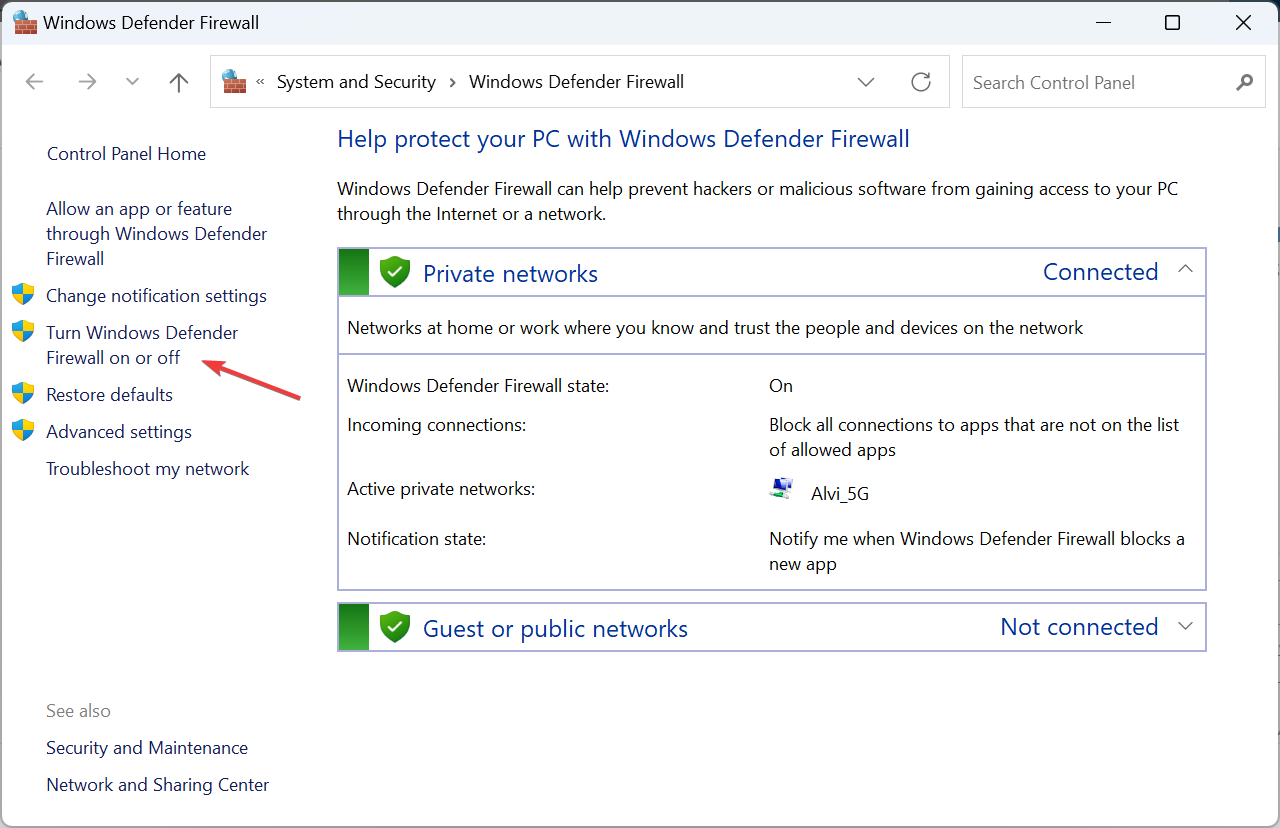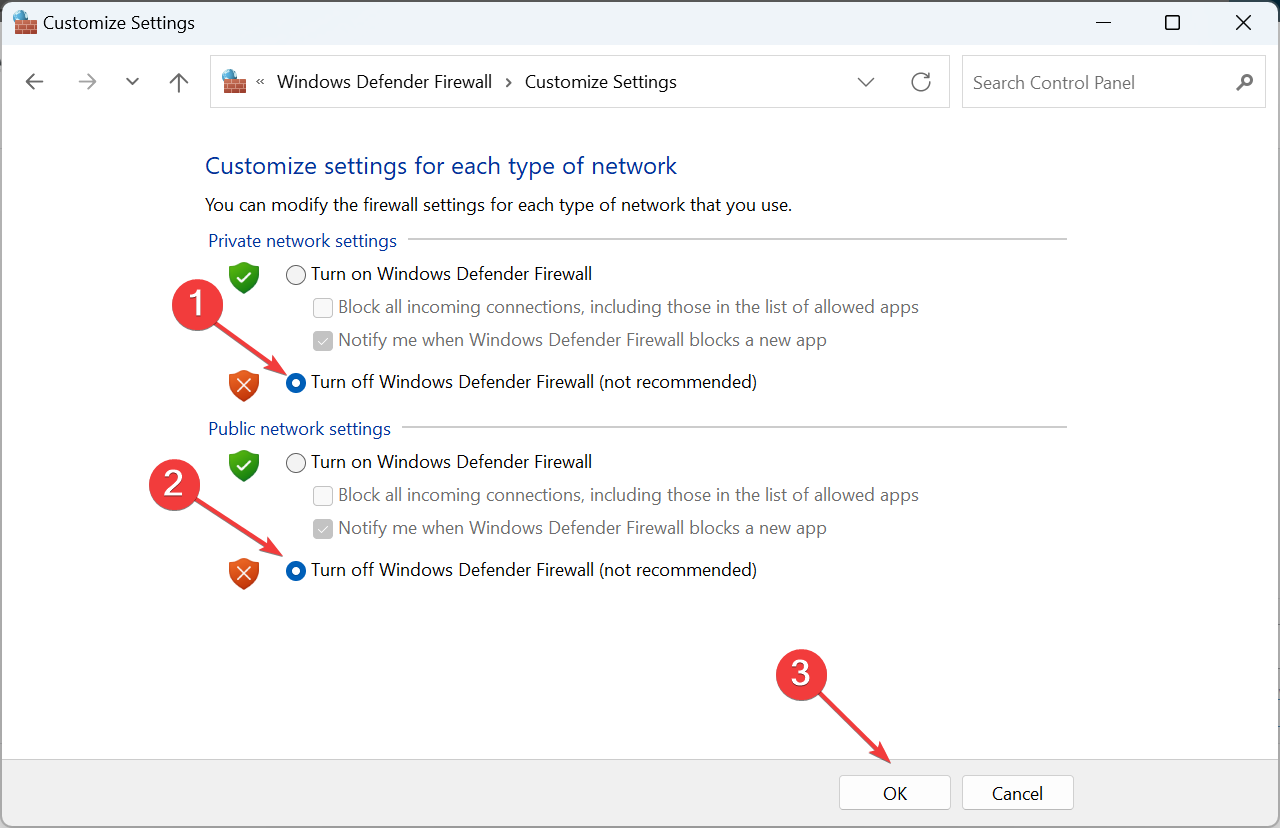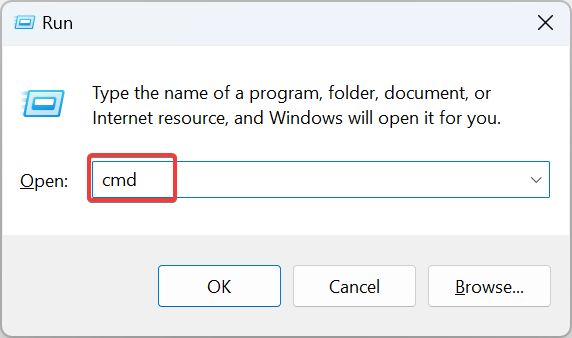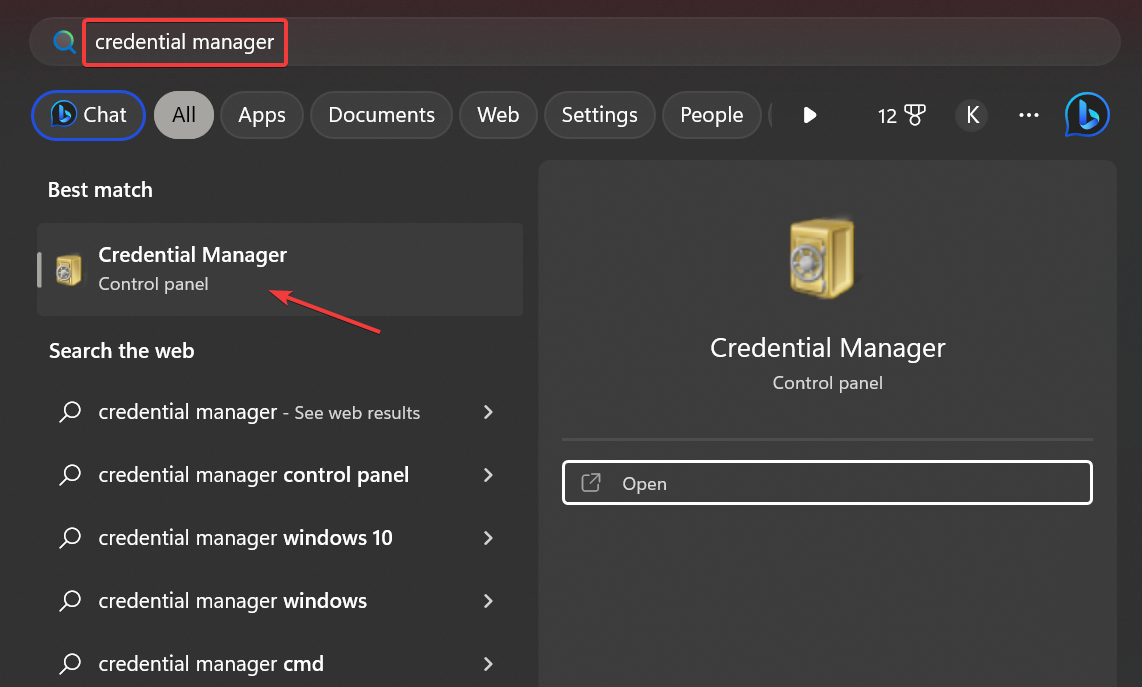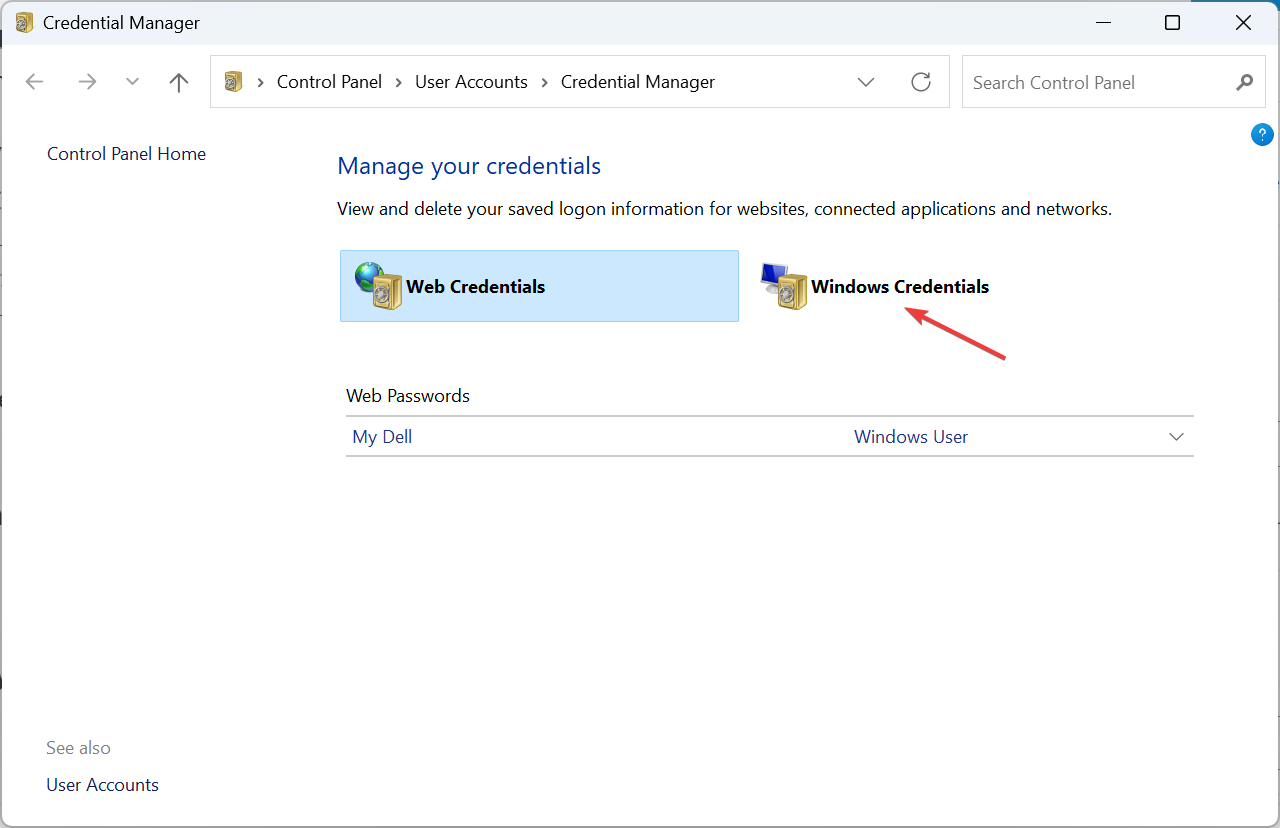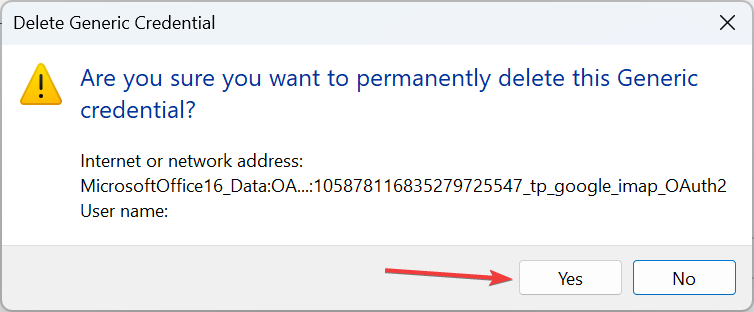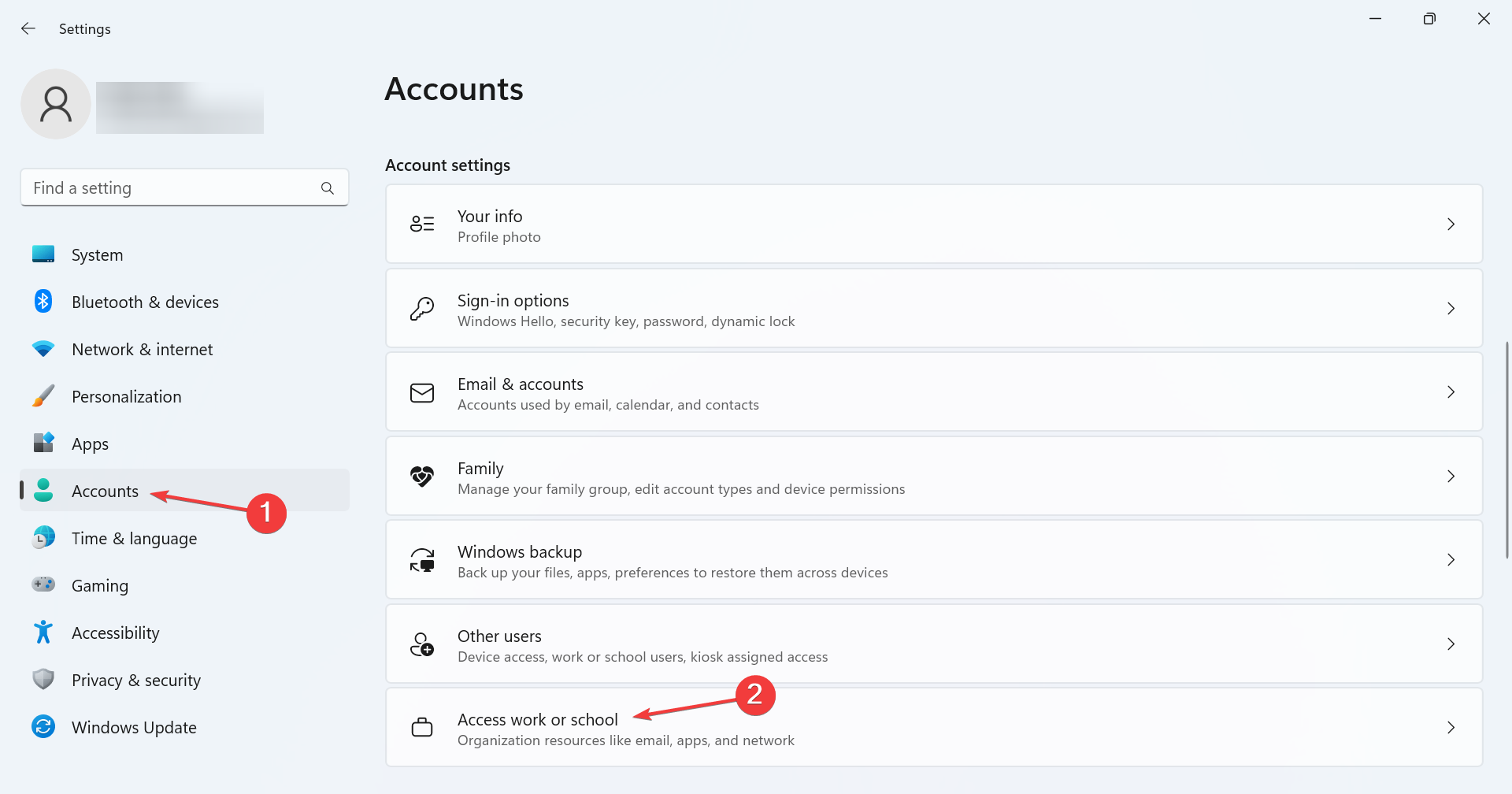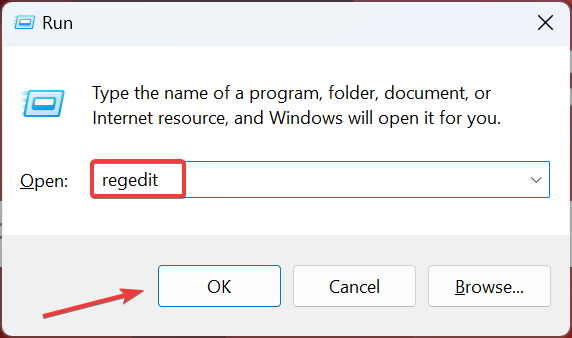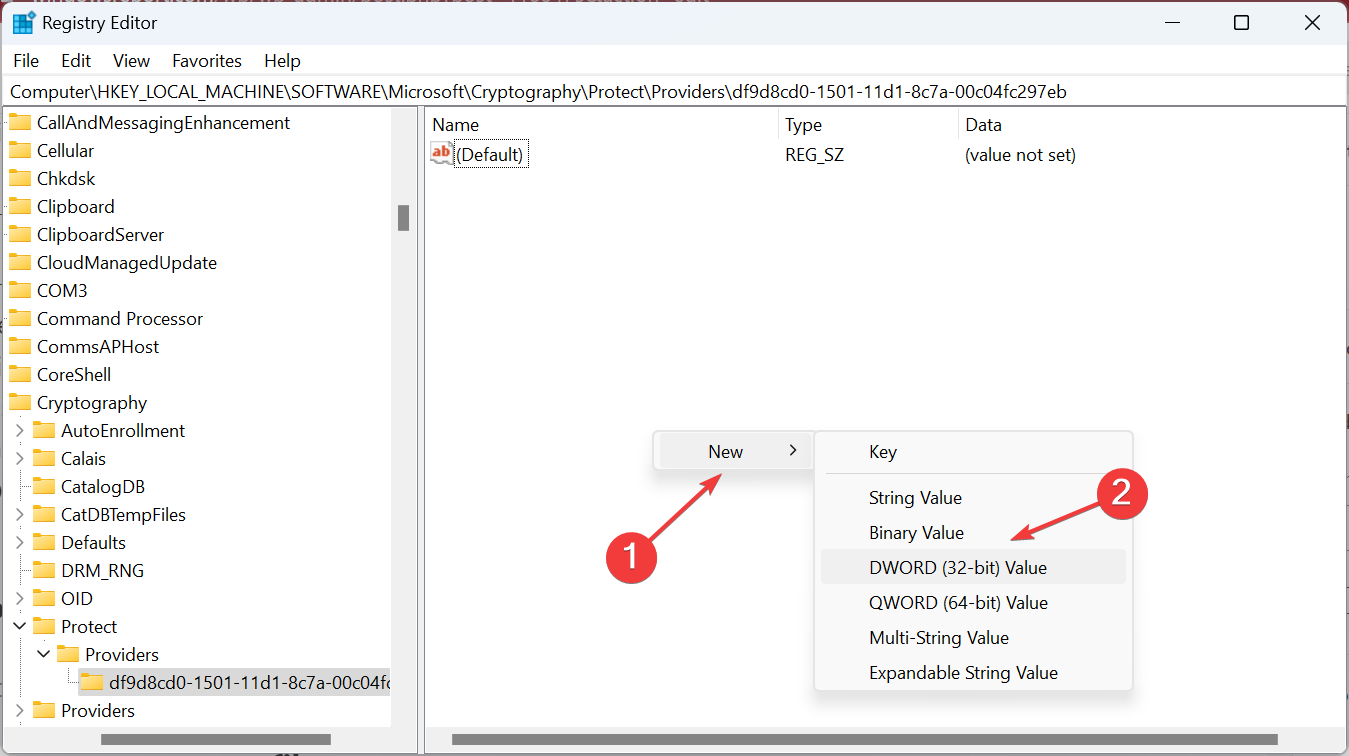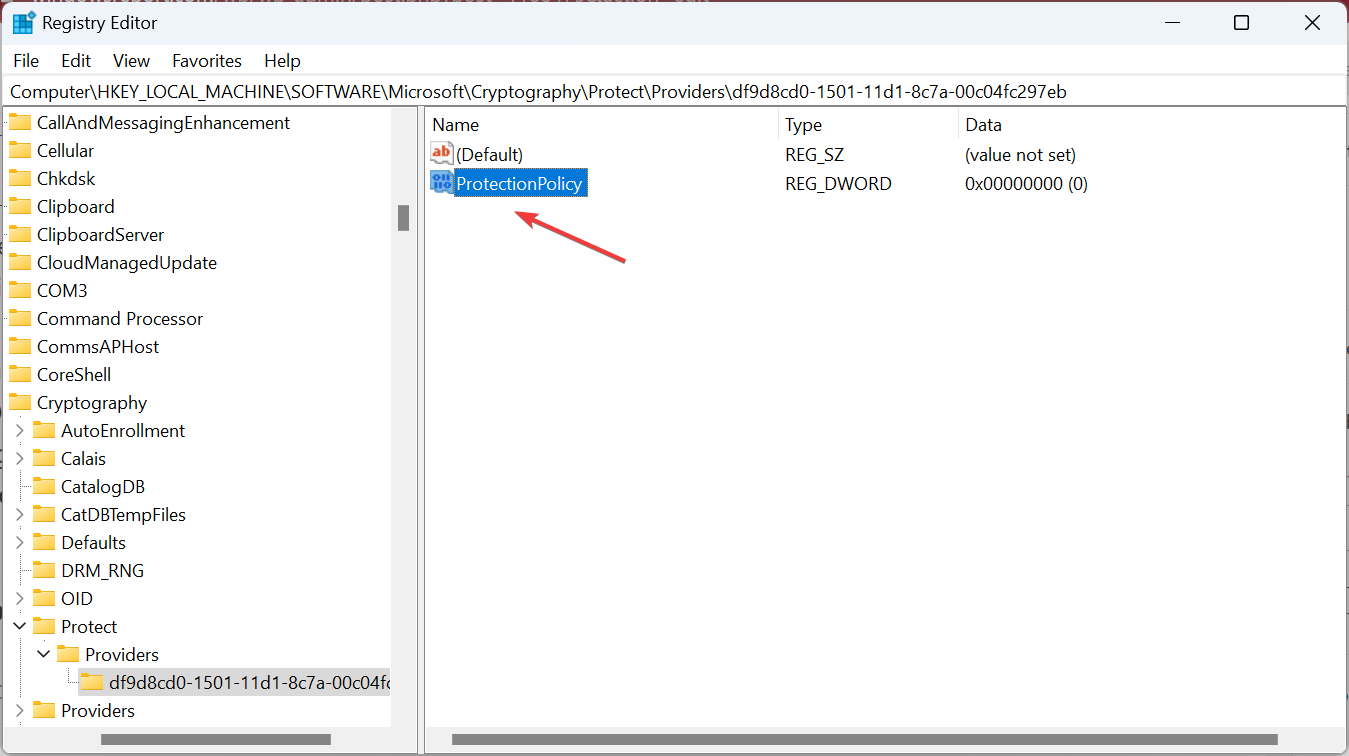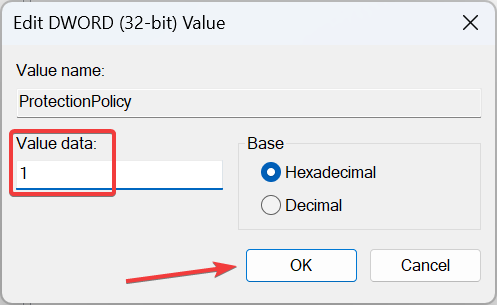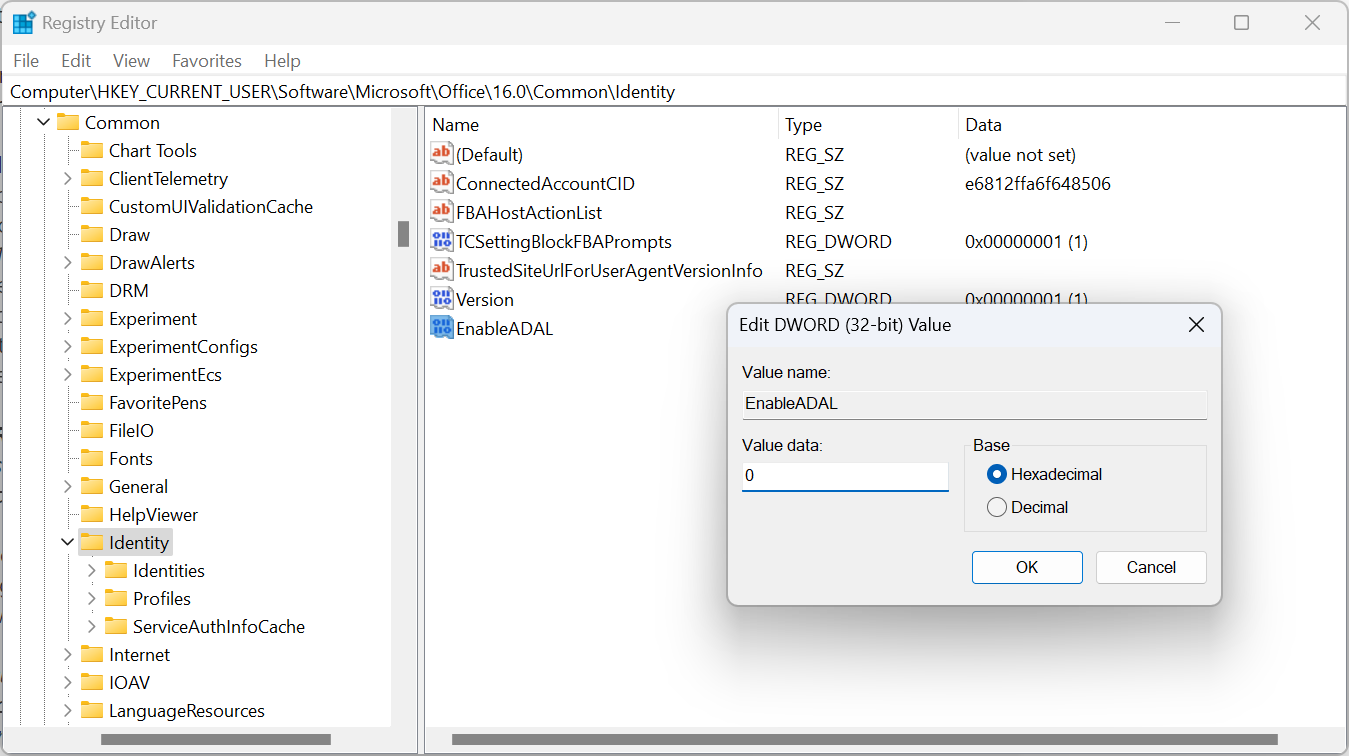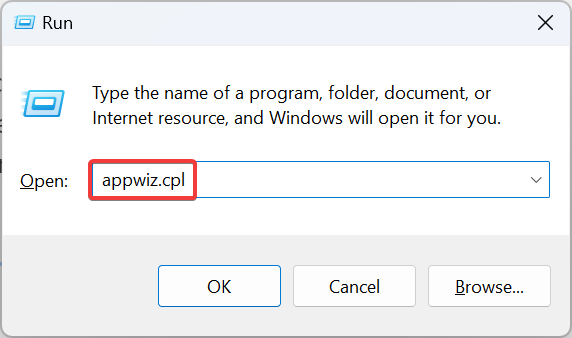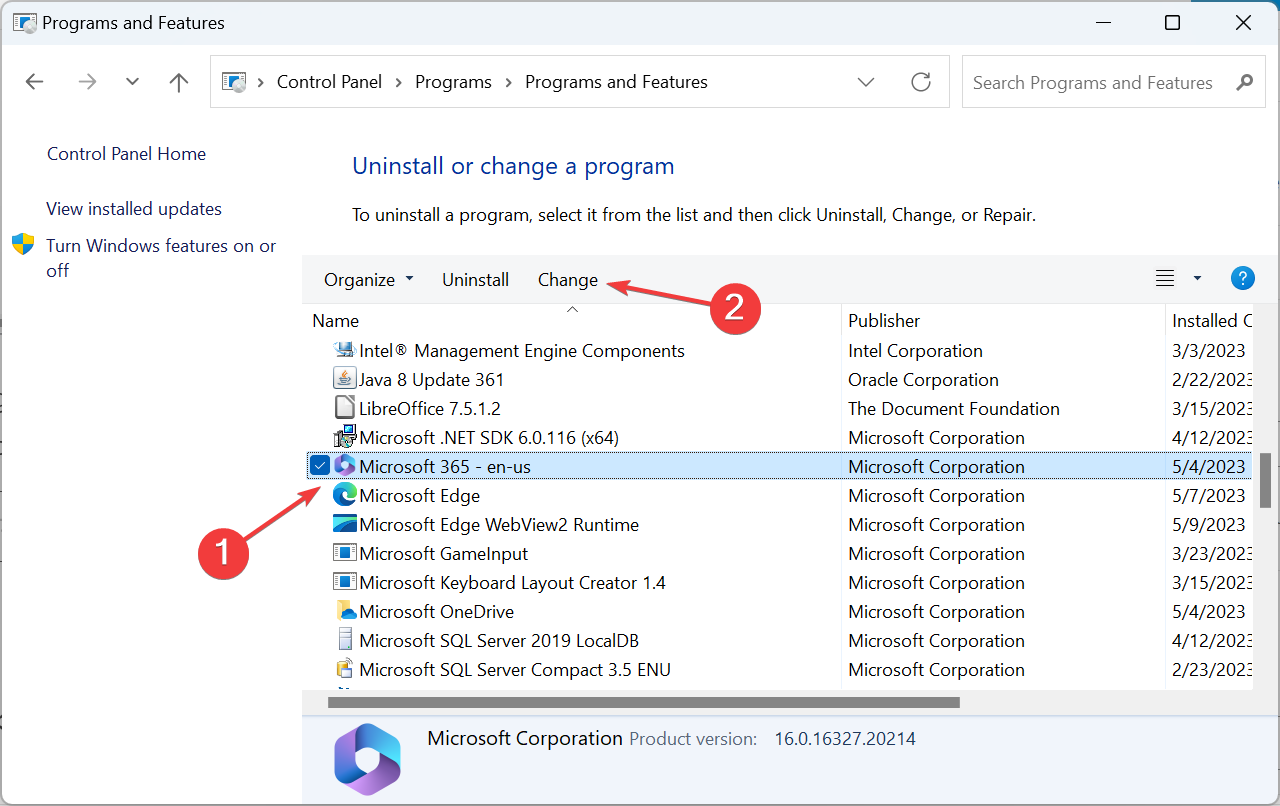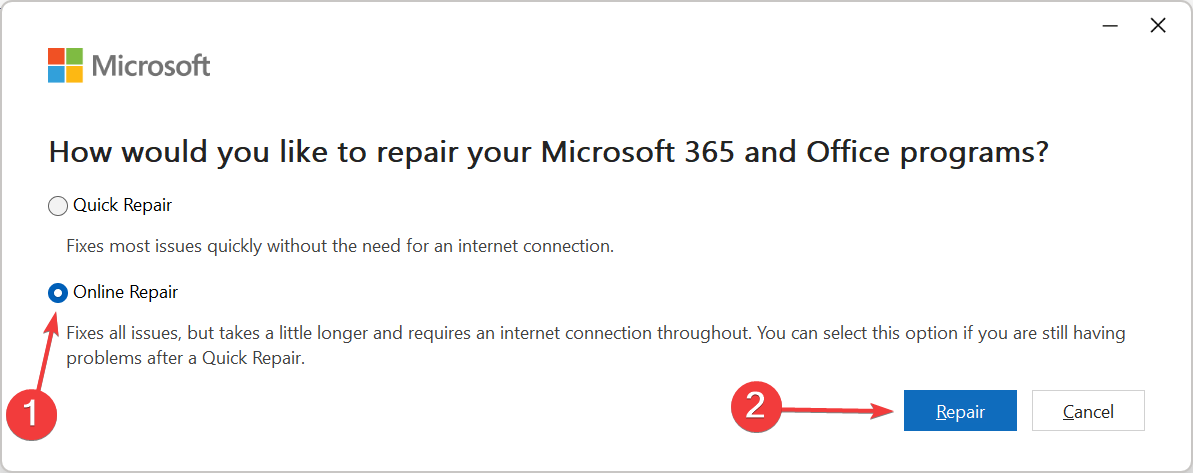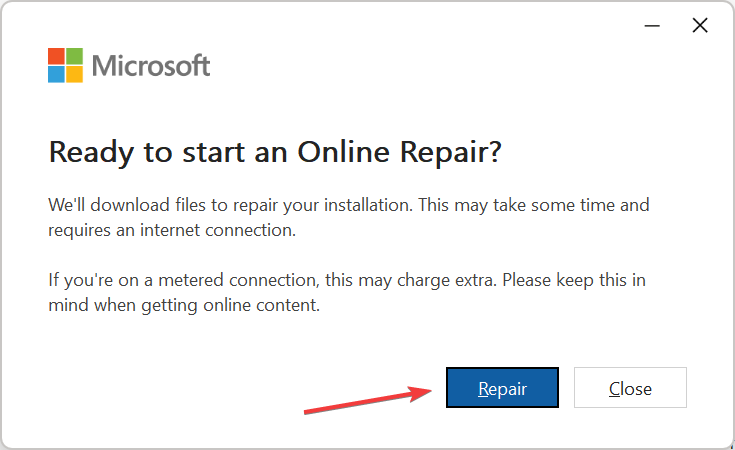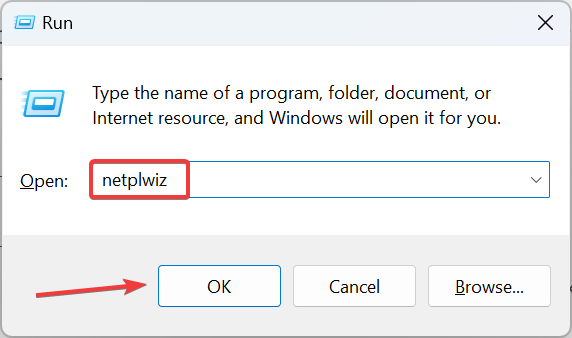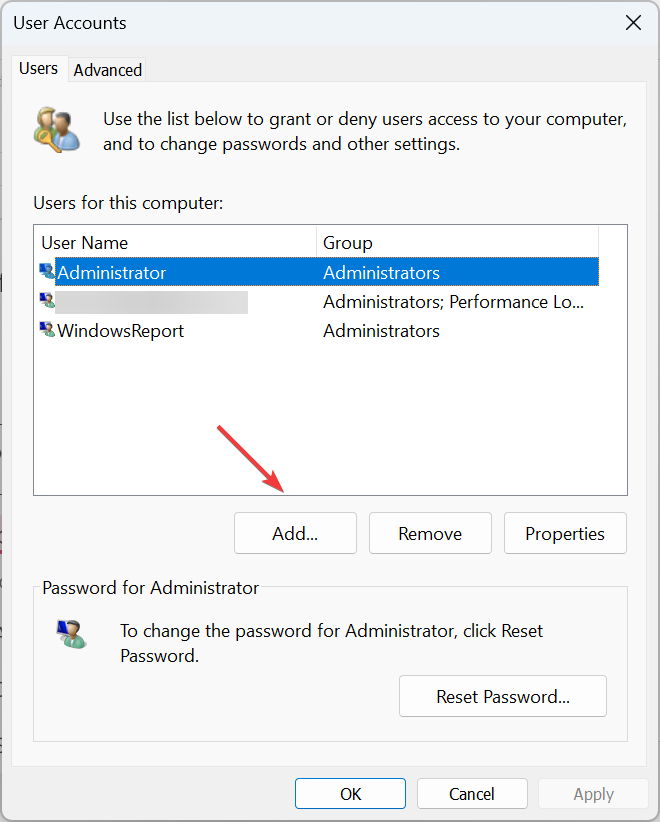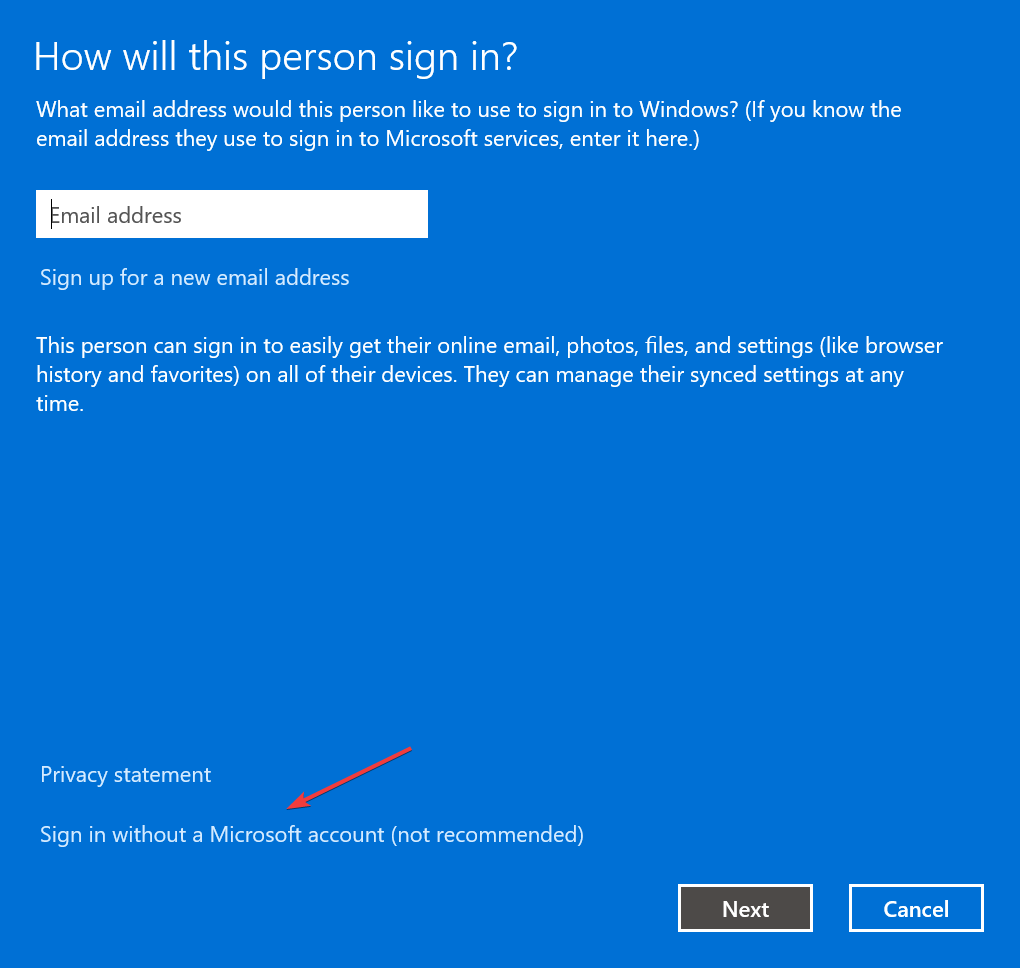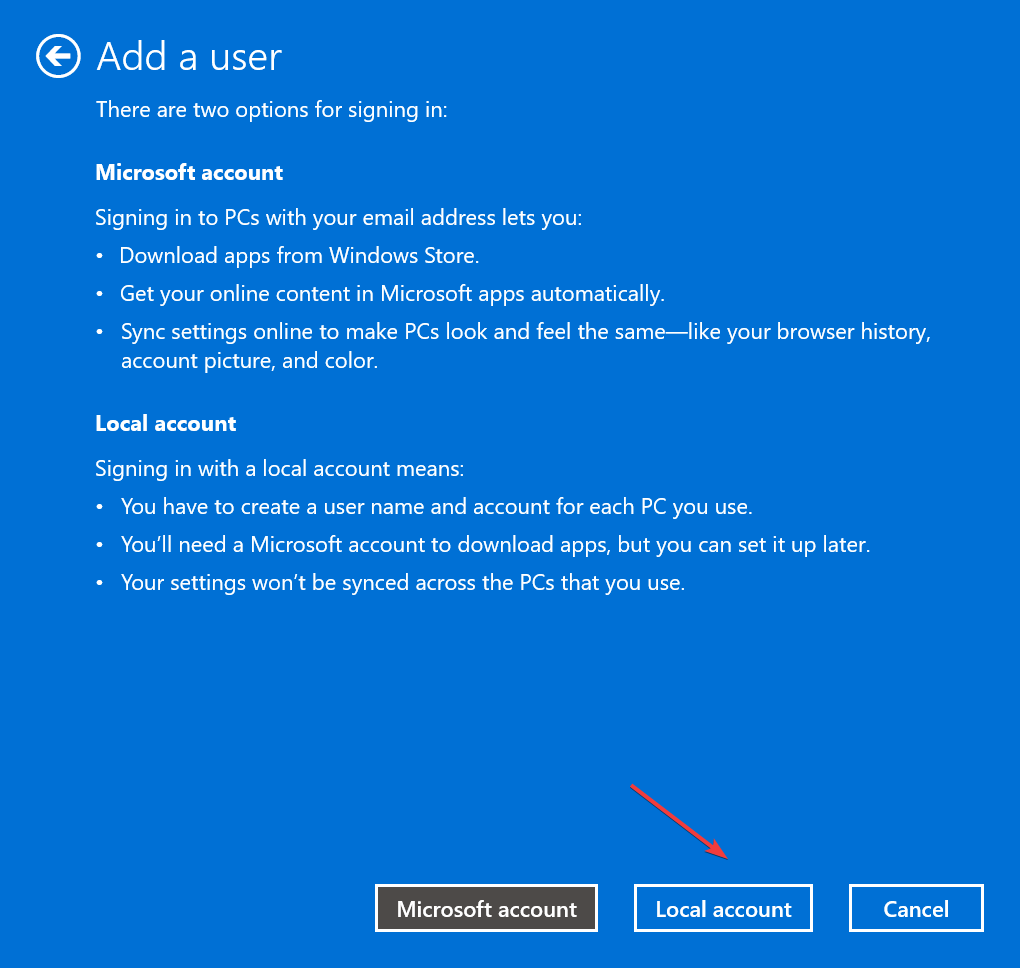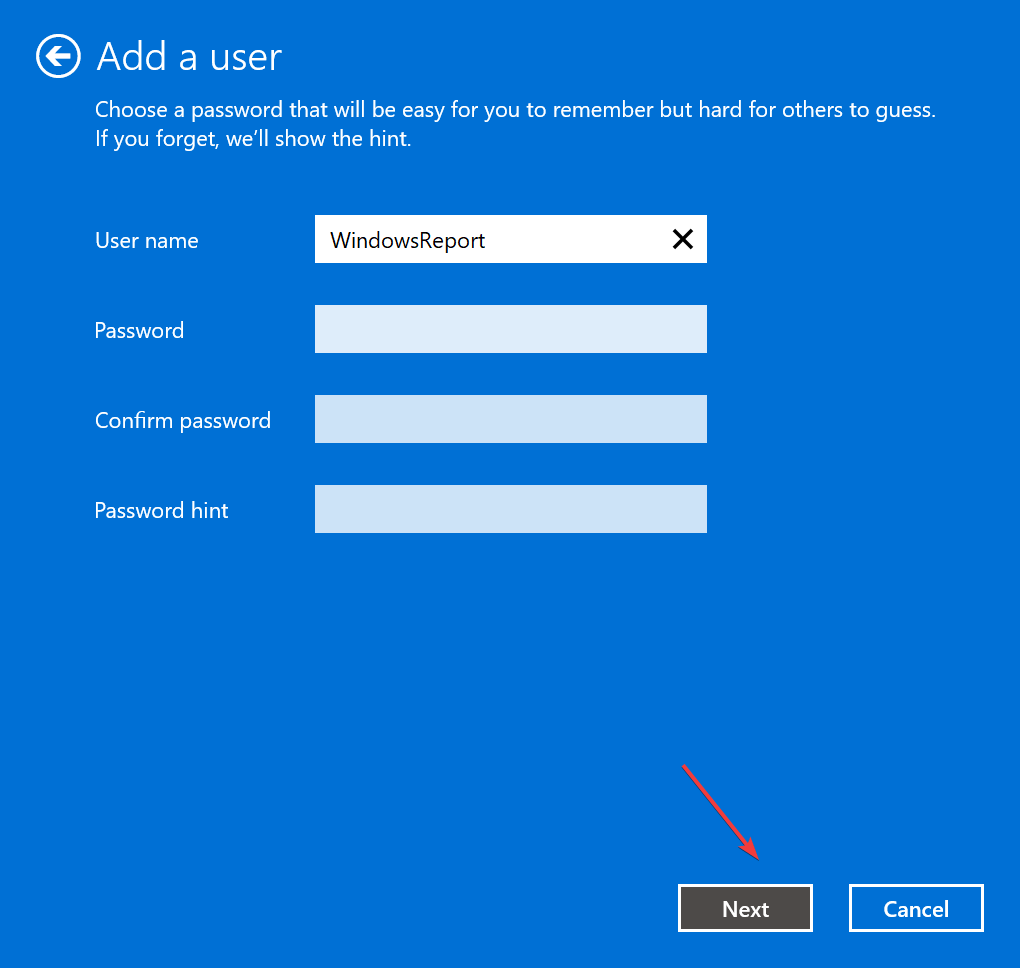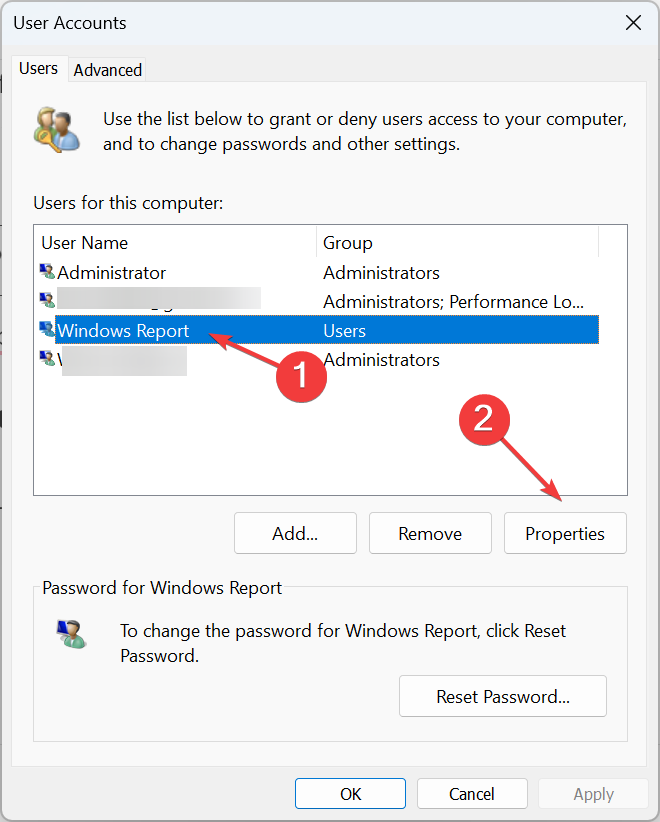Expert solutions to get your Office apps running
by Kazim Ali Alvi
Kazim has always been fond of technology, be it scrolling through the settings on his iPhone, Android device, or Windows. And at times, unscrewing the device to take… read more
Updated on
- The error code 80090034 prevents users from setting up Microsoft Office and signing in due to TPM issues.
- The error appears when the corrupt system files are corrupt or a third-party program is blocking the attempt.
- To fix things, disable the firewall and VPN, change the account settings, or modify the Registry, amongst other solutions.
TPM or Trusted Platform Module, is a dedicated microcontroller to enhance the PC’s security. It’s also one of the minimum system requirements for Windows 11. But the TPM does trigger a range of issues, and error code 80090034 with Office applications is a common one.
The message reads, Something went wrong. Your computer’s Trusted Platform Module has malfunctioned. If the error persists, contact your system administrator with the error code 80090034, and Encryption failed listed next to Server message. Keep reading to find out how all about the problem!
What is error code 80090034 in Microsoft?
The Office 365 account setup TPM error 80090034 appears when users try to activate the suite and sign in. This happens due to a failure on the part of the TPM, but it is not as complex as many would imagine.
Here are a few reasons you get the TPM has malfunctioned error 80090034:
- Corrupt system files: A common reason behind such issues is corrupt system files, which affect the core functioning of Windows.
- Issues with the TPM: When you get the TPM has malfunctioned error in Microsoft Office, it could be problems with the configured settings to blame.
- Problems with Microsoft Office: In some cases, it is an issue with the Office app, and repairing it usually does the trick.
- Conflicting third-party application: For some users, it was a third-party application, generally an antivirus, that triggered the error code 80090034 – Microsoft Teams.
How do I fix the error code 80090034?
Before we move ahead, try these quick solutions first:
- Install any pending Windows updates.
- Disable the installed third-party antivirus on the PC and verify whether the error is fixed.
- For users with the feature turned off, enable TPM from the BIOS. In case it’s already turned on, re-enable it.
- Disconnect from any VPN or similar software that could modify the network properties.
If none work, move to the fixes listed next.
1. Disable the firewall
Tip
Make sure to re-enable the Windows Firewall once done with setting up Microsoft Office.
- Press Windows + S to open Search, type Windows Defender Firewall, and click on the relevant search result.
- Click on Turn Windows Defender Firewall on or off in the navigation pane.
- Select Turn off Windows Defender Firewall (not recommended) under both Private network settings and Public network settings, then click OK to save the changes.
If you are wondering how to solve error code 80090034, the primary approach should be to disable Windows Firewall or even a third-party one. Because it’s likely that the firewall is blocking the program.
2. Repair the corrupt system files
- Press Windows + R to open Run, type cmd, and hit Ctrl + Shift + Enter.
- Click Yes in the UAC prompt.
- Now, paste the following commands individually and hit Enter after each for DISM:
DISM /Online /Cleanup-Image /CheckHealthDISM /Online /Cleanup-Image /ScanHealthDISM /Online /Cleanup-Image /RestoreHealth - Next, run this command for the SFC scan:
sfc /scannow - Finally, restart the computer for the changes to come into effect.
To eliminate the possibility of corrupt system files triggering error code 80090034, it’s imperative that you run the DISM tool and SFC scan. In case any such files are found, they will be replaced with a cached copy.
You can as well scan your PC in detail using a system repair application that can efficiently scan your OS and take care of damaged files causing this Microsoft error.
⇒ Get Fortect
3. Clear the credentials
- Press Windows + S to open Search, type Credential Manager in the text field, and click on the result.
- Go to Windows Credentials.
- Now, choose the Office credential, and click on Remove.
- Click Yes in the confirmation prompt.
- Similarly, delete the other Office credentials listed here.
- Once done, restart the computer, and then check if you can set up Office apps.
In some cases, the corrupt credentials were responsible for error code 80090034 when setting up Office 365, and clearing them did the trick. Since there’s no way to identify the problematic one, we recommend clearing all and reconfiguring the credentials.
4. Change the account settings
- Press Windows + I to open Settings, select Accounts from the navigation pane, and click on Access work or school.
- Click on Disconnect if your account is linked to an organization, and confirm the change.
- You should now be able to set up Office or Teams.
- Fix: No Internet, Secured Error on Windows 11
- Fix: Keyboard Shortcuts are Not Working in Photoshop
5. Modify the registry
- Press Windows + R to open Run, type regedit in the text field, and click OK.
- Click Yes in the prompt.
- Paste the following path in the address bar and hit Enter:
HKEY_LOCAL_MACHINE\Software\Microsoft\Cryptography\Protect\Providers\df9d8cd0-1501-11d1-8c7a-00c04fc297eb - Right-click on the empty part, hover the cursor over New, select DWORD (32-bit) Value, and name it ProtectionPolicy.
- Double-click on the newly created DWORD.
- Enter 1 under Value data, and click OK to save the changes.
- Finally, restart the computer for the changes to apply.
- If the problem persists, navigate the following path in the Registry:
HKEY_CURRENT_USER\Software\Microsoft\Office\16.0\Common\Identity - Now, as you did earlier, create a DWORD (32-bit) Value titled EnableADAL, and set its Value data to 0.
Oftentimes, it’s a misconfiguration with the TPM that can’t be fixed via the GUI route, and that’s where modifying the Registry helps eliminate error code 80090034 in Outlook.
6. Repair Microsoft Office
- Press Windows + R to open Run, type appwiz.cpl, and hit Enter.
- Select Microsoft 365 from the list of installed apps, and click on Change.
- Choose Online Repair and click Repair to proceed.
- Again, click Repair in the confirmation prompt and wait for the process to complete.
For some users, it was a problem with Microsoft Office itself that led to error code 80090034, and repairing it got things running. Just make sure you are connected to the Internet before starting the Online Repair.
7. Create a new user profile
- Press Windows + R to open Run, type netplwiz in the text field, and click OK.
- Click on Add.
- Click Sign in without a Microsoft account.
- Now, click on Local account.
- Enter the username, and password (if required), then click on Next.
- Click Finish to create the account.
- Once done, select the new user account, and click on Properties.
- Go to the Group Membership tab, select Administrator, and click on OK.
That’s it! All that’s left is to log in with the new account, download Microsoft Office, and you should be able to set up and sign in if the previous user profile was corrupt.
Now that you have gotten rid of error code 80090034, check the best Office add-ins to enhance your experience and simplify tasks.
For any queries or to share your solution with us, drop a comment below.
Пропустить и перейти к содержимому
Столкнулся с проблемой при добавлении учётной записи Exchange online в Microsoft Outlook. При любых попытках вылетала ошибка 80090034 в конце с припиской Сообщение сервера: Ошибка шифрования.
Притом ошибка эта была только у одного пользователя. Пробовал удалять профиль Outlook и создавал его заново (помогает от многих ошибок) но не помогало. По советам из интернета изменял некоторые параметры реестра пользователя но тоже ничего. Пока не наткнулся на видео на английском языке с решением этой проблемы)
Решение оказалось довольно простым.
Итак запускаем редактор реестра Win + R -> regedit -> Ok
Учтите, что если вы делаете это от имени пользователя без Админ прав, вам нужно запустить редактор реестра от имени администратора или войти в систему пользователем с административными правами.
Идем в ветку \HKEY_LOCAL_MACHINE\SOFTWARE\Microsoft\Cryptography\Protect\Providers\df9d8cd0-1501-11d1-8c7a-00c04fc297eb\
И создаём там параметр DWORD (32 бита) с именем ProtectionPolicy со значением 1
После чего рекомендовано перезагрузить компьютер но у меня всё сразу заработало и без перезагрузки.
В дополнение.
Спустя какое-то время начала выскакивать ошибка 80090030 Доверенный платформенный модуль вашего компьютера неисправен
Вылечить помогло добавление параметра DWORD (32 бита) с именем EnableADAL со значением 0 в ветке:
\HKEY_CURRENT_USER\Software\Microsoft\Office\16.0\Common\Identity\
(срабатывает даже без перезагрузки компьютера.
10
Posted by Chris1565 2019-06-12T13:46:40Z
Good morning,
Having an issue just recently that we haven’t seen before when setting up new PCs with Office 365 Premium apps. The error below presents itself when setting up the Outlook account for the user. Has anyone seen this as this seems to be a new issue? We have cleared the TPM chip, re-created profiles, disabled modern auth, disjoined/rejoined the domain, etc. with no luck. This client is not in a hybrid 365 setup and not using Bitlocker. Thanks for the help in advance.
check
Best Answer
Found the problem here…issue was GPO not being applied correctly over VPN due to Sonicwall firewall blocking this (Application Control Detection Alert: PROXY-ACCESS Encrypted Key Exchange). Once I disabled this all is well. Maybe this will help somebody one day.
9 found this helpful
thumb_up
thumb_down
View Best Answer in replies below
46 Replies
-
Check the drivers for your onboard TPM. I know HPs get finicky without that security software installed.
My assumption is that you created a stock image for the new devices and omitted the TPM driver/ software as it looked more like bloatware from the manufacturer.
Was this post helpful?
thumb_up
thumb_down
-
These are Dell PCs and they seem to have all the latest drivers. I have even downgraded the BIOS on one with no luck just for testing. I have also uninstalled the TPM device and re-installed it with no luck.
Was this post helpful?
thumb_up
thumb_down
-
Hi Chris,
I found this on a MS forum about your unusual issue Outlook activation error Opens a new window and it mentioned that they resolved the issue by modifying the registry to disable modern authentication.
HKCU\SOFTWARE\Microsoft\Office\16.0\Common\Identity\
REG_DWORD
EnableADAL
0
1 of 3 found this helpful
thumb_up
thumb_down
-
Found the problem here…issue was GPO not being applied correctly over VPN due to Sonicwall firewall blocking this (Application Control Detection Alert: PROXY-ACCESS Encrypted Key Exchange). Once I disabled this all is well. Maybe this will help somebody one day.
9 found this helpful
thumb_up
thumb_down
-
Such a convoluted issue & such a great (and simple) fix. I’d Spice you twice if i could…….
Was this post helpful?
thumb_up
thumb_down
-
can anyone help me?
Was this post helpful?
thumb_up
thumb_down
-
I deleted the appdata folder. Nope.
I removed and recreated the profile. Nope.
I disabled IPv6. Nope.
I changed the DNS servers. Nope.
2 users on the PC — one is fine, the new one is fine EXCEPT I cannot launch and configure Outlook.
Updated the firmware. Nope.
Cannot even add new mail account in a second Outlook profile — cannot find server.
WTF!!
1 found this helpful
thumb_up
thumb_down
-
I added this to the registry of a user whose machine was giving the same error even after updating the BIOS and clearing TPM
HKEY_LOCAL_MACHINE\Software\Microsoft\Cryptography\Protect\Providers\df9d8cd0-1501-11d1-8c7a-00c04fc297eb
Change the value of “ProtectionPolicy” to “1″
if ProtectionPolicy dosen’t exist, Add DWORD (32bit) Value and then change the value to 1
Found the information for it from here; https://social.technet.microsoft.com/Forums/windows/en-US/47faab6b-d717-4068-bee4-c694811e0066/crede… Opens a new window
29 found this helpful
thumb_up
thumb_down
-
Thanks for posting that, IT_TL!! Making that change in the registry fixed it for me.
1 found this helpful
thumb_up
thumb_down
-
Has same issue, but it was solved by login on with the VPN connection.
I was installing these HP computers from remote and first logged on with VPN into the user account but later on logged on without the VPN returning me this error when trying to setup the Outlook account.
So I logged off and logged on again but this time with the VPN option.
10 found this helpful
thumb_up
thumb_down
-
THIS! I had not had this problem until I tried this over the VPN but did not think this was caused by VPN. Thank you for posting this solution as I was not even looking at that aspect.
3 found this helpful
thumb_up
thumb_down
-
Erwin Craps Thank you! HP computer account set up on VPN, disconnected VPN, and received this error in Office activation. Chrome also refused to save profile cookies and paused syncing whenever closed.
Can someone provide me an explanation for this? HP TPM chip has the WAN IP remembered, or can only authenticate over VPN now?
1 found this helpful
thumb_up
thumb_down
-
This worked like a champ! Absolutely no other solutions worked, trust me, I tried them all until I found this one.
0 of 1 found this helpful
thumb_up
thumb_down
-
I can confirm that VPN was my issue as well however it makes no sense. Bitlocker was running fine, lenovo laptop with TPM2.0 win10 1903 fully updated, all drivers fully updated, BIOS at default recommended settings — all fresh install.
Installed office 365, fully updated
tried clearing my TPM chip keys (make sure you have your recovery key if you’re trying this) — no luck
received this error until I connected to VPN and then the error just went away.
** i was remote on/off VPN while doing some of this work on the laptop. I did image the laptop on site and installed office on site but figured I’d do the *easy* stuff like setup office while on my home network.
Would be nice to know the cause of this for those who may not intend to require a VPN all the time.
Was this post helpful?
thumb_up
thumb_down
-
Sharing my experience with this issue:
My issue with this was finally resolved after connecting to our VPN AND running gpupdate /force which in our case, turns off Windows Firewall on the domain.
When I was only connected to VPN, I was still getting the TPM error. Once I confirmed Firewall was off on domain, I was able to register the user machine.
FWIW: This only began happening after updating our laptop images and using the latest version of the Microsoft Office Deployment Toolkit.
Version: 16.0.12827.20268
2 found this helpful
thumb_up
thumb_down
-
I’ve done more laptops successfully using the same image and did not have this issue. In our experience it seems to be related to when we were connected to vpn during the initial Configuration which then crept up during a mailbox setup.
Was this post helpful?
thumb_up
thumb_down
-
la respuesta de @IT_TL me funciona para resolver este error
muchas gracias. saludos
Was this post helpful?
thumb_up
thumb_down
-
Thanks
IT_TL . Its works
Was this post helpful?
thumb_up
thumb_down
-
Thanks. Just like to tack on the VPN fix worked for me, too.
I’ve got to say, it very frustrating this error shows a TPM issue, and is really not at all related.
Was this post helpful?
thumb_up
thumb_down
-
Erwin Craps, as soon as I connected back to the user’s VPN I was able to authenticate and successfully activate the user’s Office software. Thank you!
I’m no expert but my theory is that when installing the Office software over VPN the TPM module registers an entry that is unique to that VPN session so that later when you go try and activate Office and have disconnected from the user’s VPN session, maybe due to a restart after the Office installation, the activation fails cause of mismatching TPM entries..?. Seems like a Windows 10/Office bug maybe?
Was this post helpful?
thumb_up
thumb_down
-
Butsy
This person is a verified professional.
Verify your account
to enable IT peers to see that you are a professional.New contributor
sonoraThis can happen when your system time is off. I just struggled with it for 2 hours before I realized the time zone needed set…
3 found this helpful
thumb_up
thumb_down
-
Butsy
This person is a verified professional.
Verify your account
to enable IT peers to see that you are a professional.sonora
I had this same error. Turns out the system time was an hour off…. Changed the time zone and was able to sign into office apps.
1 found this helpful
thumb_up
thumb_down
-
Amazeballs answer, worked for me.
0 of 1 found this helpful
thumb_up
thumb_down
-
The Sonicwall encrypted key one.
Was this post helpful?
thumb_up
thumb_down
-
Found the problem here…issue was GPO not being applied correctly over VPN due to Sonicwall firewall blocking this (Application Control Detection Alert: PROXY-ACCESS Encrypted Key Exchange). Once I disabled this all is well. Maybe this will help somebody one day.
I’m using USMT to copy profiles and have encountered the error somewhat frequently. Usually a reboot «fixes» the issue. Today, connecting to VPN and doing a GUPDATE /FORCE fixed it for me!
Was this post helpful?
thumb_up
thumb_down
-
Thank you
IT_TL, that worked!!!
Was this post helpful?
thumb_up
thumb_down
-
Thank you very much; can’t believe it’s related to VPN. Once connecting to the office network via VPN, everything is good.
Was this post helpful?
thumb_up
thumb_down
-
I’m still not sure how you were able to correlate that registry key from that link to this issue, but it saved my bacon! Awesome
Was this post helpful?
thumb_up
thumb_down
-
IT_TL wrote:
I added this to the registry of a user whose machine was giving the same error even after updating the BIOS and clearing TPM
HKEY_LOCAL_MACHINE\Software\Microsoft\Cryptography\Protect\Providers\df9d8cd0-1501-11d1-8c7a-00c04fc297eb
Change the value of “ProtectionPolicy” to “1″
if ProtectionPolicy dosen’t exist, Add DWORD (32bit) Value and then change the value to 1
Found the information for it from here; https://social.technet.microsoft.com/Forums/windows/en-US/47faab6b-d717-4068-bee4-c694811e0066/crede… Opens a new window
This worked for me, thank you
Was this post helpful?
thumb_up
thumb_down
-
Thanks that worked for me!
0 of 1 found this helpful
thumb_up
thumb_down
-
Maybe this was mentioned before, and forgive me for the simplicity of the answer, but have you tried turning it off, unplugging for 30 seconds and replugging in? I have seen this issue a few times and when it comes up for me, it basically shows no TPM in the bios or the device manager. This always seems to follow the installation of O365 so far.
Hope this helps. I just would love to know why this works…
Was this post helpful?
thumb_up
thumb_down
-
Maybe this was mentioned before, and forgive me for the simplicity of the answer, but have you tried turning it off, unplugging for 30 seconds and replugging in? I have seen this issue a few times and when it comes up for me, it basically shows no TPM in the bios or the device manager. This always seems to follow the installation of O365 so far.
Hope this helps. I just would love to know why this works…
Was this post helpful?
thumb_up
thumb_down
-
ProtectionPolicy = 1 enables local back up of «MasterKey» instead of requiring backup to a Domain Controller. (Link from MS Opens a new window)
Seems like an admin account is needed to get this MasterKey thing. Local admin privileges might be easier to get than domain admin privileges, so this ProtectionPolicy = 1 registry setting may slightly open up a security vulnerability.
Apologies for the second link being with a source that doesn’t have too much credibility. Just thought I’d throw in another thing to consider after looking into ProtectionPolicy.
Was this post helpful?
thumb_up
thumb_down
-
AndreaD
This person is a verified professional.
Verify your account
to enable IT peers to see that you are a professional.cayenne
Erwin Craps wrote:
Has same issue, but it was solved by login on with the VPN connection.
I was installing these HP computers from remote and first logged on with VPN into the user account but later on logged on without the VPN returning me this error when trying to setup the Outlook account.
So I logged off and logged on again but this time with the VPN option.I could kiss you right now. Was going insane. Read your reply and it clicked. Thank you!
Was this post helpful?
thumb_up
thumb_down
-
My problem was also time difference. system time was stablished by server (domain) and it was 14min difference.
Logging on server, adjunst time, and… voila!
Was this post helpful?
thumb_up
thumb_down
-
JanSnow
This person is a verified professional.
Verify your account
to enable IT peers to see that you are a professional.pimiento
Had the same issue. I just had to login to the machine as local admin and connect to VPN. Signed back in as user and it let me login to all O365 apps.
Was this post helpful?
thumb_up
thumb_down
-
Thanks IT_TL . Its works
Was this post helpful?
thumb_up
thumb_down
-
Thank you so much, that fixed my issue.
Was this post helpful?
thumb_up
thumb_down
-
You rock!! why does Microsoft do this to us???
Was this post helpful?
thumb_up
thumb_down
-
Me… This helped me today. Thank you.
Was this post helpful?
thumb_up
thumb_down
-
Sir, THANK YOU for sharing the solution that you discovered yourself. I had been struggling with a set of issues for a specific device, this TPM error being the final boss. I connected the device to the VPN, ran gpupdate /force, and everything started working. Again, THANK YOU!!! Your information generosity has definitely earned me some kudos at work, especially because two other T2 techs spent a combined two hours and could not come to a resolution.
Was this post helpful?
thumb_up
thumb_down
-
Thanks @chris1565 this also helped me fix a user getting this error — Microsoft Outlook. Cannot start Microsoft Outlook. Cannot open the Outlook window. The set of folders cannot be opened. The file C::\Users\username\AppData\Local\Microsoft\Outlook\user@domain.ost cannot be accessed. You must connect to Microsoft Exchange at least once before you can use your Outlook data file (.ost).
Was this post helpful?
thumb_up
thumb_down
-
This fixed the error for myself as well:
The ProtectionPolicy value must be a DWORD.
Workaround
To work around this problem, set the value of the ProtectionPolicy registry
entry to 1 to
enable local backup of the MasterKey instead of requiring a RWDC in the following registry subkey:HKEY_LOCAL_MACHINE\Software\Microsoft\Cryptography\Protect\Providers\df9d8cd0-1501-11d1-8c7a-00c04fc297eb
Was this post helpful?
thumb_up
thumb_down
-
Obrigada. Meu problema finalmente foi resolvido depois de conectar a VPN.
Was this post helpful?
thumb_up
thumb_down
-
Yes, me too, working a dell computer remotely, I have the computer in my office, but connecting to HQ Server with Sonicwall VPN, I had the same issue, and was resolved the same exact way.
Was this post helpful?
thumb_up
thumb_down
-
IT_TL wrote:
I added this to the registry of a user whose machine was giving the same error even after updating the BIOS and clearing TPM
HKEY_LOCAL_MACHINE\Software\Microsoft\Cryptography\Protect\Providers\df9d8cd0-1501-11d1-8c7a-00c04fc297eb
Change the value of “ProtectionPolicy” to “1″
if ProtectionPolicy dosen’t exist, Add DWORD (32bit) Value and then change the value to 1
Found the information for it from here; https://social.technet.microsoft.com/Forums/windows/en-US/47faab6b-d717-4068-bee4-c694811e0066/crede… Opens a new window
Yes, that fixed it for me also.
Was this post helpful?
thumb_up
thumb_down
Read these next…
Beginner to RDP needs some basic pointers
Windows
HI, I am not new to IT at all, but have never set up an RDP server before today. I need to allow a user to connect in to a desktop session.What I have managed so far is install Remote Desktop Services on a Windows 2022 server, including a client access l…
Your thoughts on Surface Pro devices?
Hardware
Personally, I hate them. They’re terrible, little confined pieces of cr*p that overheat so easily, a nightmare to image unless you buy a dock for it. The only people i’ve seen who actually praise them are managers and directors since it makes them look be…
Snap! — Space Submarines, Brain Waves, Chernobyl Wind Farm, Real-Life Asteroids
Spiceworks Originals
Your daily dose of tech news, in brief.
Welcome to the Snap!
Flashback: September 21, 1996: Programming Error May Have Contributed to Plane Crash (Read more HERE.)
Bonus Flashback: September 21, 2003: Galileo Completes Jupiter Mission (Re…
Large amount of spam recently getting around filters. How to stop these?
Security
Got a HUGE uptick in spam emails recently, and they are actually getting through. The spam is coming from gibberish@gibberish.onmicrosoft.com and coming from IPs 40.107.X.X which after a quick search is Microsoft IPs…I am not able to just filter the do…
Old invoicing / tracking software
Software
Hi wonderful people. I hope someone may be able to assist with a rather perplexing issue.We started working with a company a few years ago providing their IT support.They use a very old (20 years plus) software package which they had built from scratch. …
Error Code 80090034 when Activating Office (solved)
Microsoft Office Error Code 80090034 Info:
It mainly occurs when you tried to install office or while installing office 365 and it gets failed. Error Code 80090034 may occur due to the following reasons:
- Due to the Microsoft Office system file get corrupt.
- Previous installation had not removed properly.
- Windows Firewall does not allow network access.
- You may download a partial setup.
To solve Office 365 Error 80090034 you may follow the below step to fix. If you follow the below steps or troubleshooting steps or processes then you may resolve this Error Code 80090034.
Steps to fix Microsoft Office 365 Error Code 80090034:
Whenever if you trying to install office 365 updated version and you keep getting error 80090034 it means you haven’t installed previous office 365 properly or your previous office file got corrupt. and you might be seen below the image as an error.
Some Common factor that causes Office Error 80090034:
- Pre-existing office installation files.
- Tamp and logs files.
- The office file got corrupt.
- The office didn’t update fully it updated partially.
- Windows Update not installed properly.
- Antivirus or Windows Firewall might be blocking the Office installation.
Steps to Fix/Resolve/troubleshoot the error code 80090034:
1 – Repair your Office app
Error Code 80090034 will be fixed when the Office repair tool replaces all the corrupted system files. Follow the steps below to run the repair tool to fix the error.
- Open Control Panel using Start.
- Click on Programs and select Programs and Features.
- Click on the Office product that you want to repair.
- Click Change.
- Select Quick Repair and click on Repair. If Quick Repair didn’t fix the Error Code 80090034, select Online Repair and click on Repair.
Note: If Office Repair did not fix this error code, then remove and reinstall the Office installation to fix this Error Code 80090034.
2 – Steps to remove Office
In case if the error persists even after running the Office repair tool, uninstall Office from your computer.
- Open Control Panel using Start
- Click on Programs and select Programs and Features.
- Select Office Suite and click on Remove.
Note: If Office installation failed or it didn’t fix the error, manual installation is required to completely remove the Office Suite.
3 – Steps to remove Office manually to fix the Error Code 80090034
If the error code 80090034 is re-occurring, proceed with the following steps to manually remove Office program from your computer.
Step 1: Remove the Windows Installer packages
- Find the Office 16 installation folder, typically located in C:\Program Files\.
- Right-click the Microsoft Office 16 folder and select Delete.
Step 2: Remove the Office scheduled tasks
- Open a Command Prompt window as an administrator.
- At the command prompt, type the following commands and press Enter after each one:
schtasks.exe /delete /tn “\Microsoft\Office\Office Automatic Updates”
schtasks.exe /delete /tn “\Microsoft\Office\Office Subscription Maintenance”
schtasks.exe /delete /tn “\Microsoft\Office\Office Click To Run Service Monitor”
Step 3: Use Task Manager to end the Click-to-Run tasks
- Open Task Manager.
- Click the Process tab
- If the following processes are running, right-click each one, and then click End task after you select each process.
- .exe
- setup*.exe
Step 4: Delete the Office files
- Press Windows logo key + R to open the Run dialog box.
- In the Open box, type %ProgramFiles%, and then click OK.
- Delete the “Microsoft Office 16” folder.
- Delete the “Microsoft Office” folder.
- Open the Run dialog box, type %ProgramFiles(x86)%, and then click OK.
- Delete the “Microsoft Office” folder.
Step 5: Delete the Office registry sub keys
- Open Registry Editor.
- Delete the following registry sub keys:
- HKEY_LOCAL_MACHINE\SOFTWARE\Microsoft\Office\ClickToRun
- HKEY_LOCAL_MACHINE\SOFTWARE\Microsoft\AppVISV
- HKEY_CURRENT_USER\Software\Microsoft\Office
- Then Delete the Office key.
Step 6: Delete the Start menu shortcuts
- Open a Command Prompt window as an administrator.
- Type %ALLUSERSPROFILE%\Microsoft\Windows\Start Menu\Programs, and then press Enter.
- Delete the “Microsoft Office 2016 Tools” folder.
4 – Download and install Office
2. Choose Install.
3. Click Run or the equivalent depending on the browser you’re using.
4. When you see “You’re good to go”, click All done.
Still getting Microsoft Office Error Code 80090034 then you may contact with technical expertise that will solve your issues.
Microsoft Office Error Code 80090034 Info:
It mainly occurs when you tried to install office or while installing office 365 and it gets failed. Error Code 80090034 may occur due to the following reasons:
- Due to the Microsoft Office system file get corrupt.
- Previous installation had not removed properly.
- Windows Firewall does not allow network access.
- You may download a partial setup.
To solve Office 365 Error 80090034 you may follow the below step to fix. If you follow the below steps or troubleshooting steps or processes then you may resolve this Error Code 80090034.
Steps to fix Microsoft Office 365 Error Code 80090034:
Whenever if you trying to install office 365 updated version and you keep getting error 80090034 it means you haven’t installed previous office 365 properly or your previous office file got corrupt. and you might be seen below the image as an error.
Some Common factor that causes Office Error 80090034:
- Pre-existing office installation files.
- Tamp and logs files.
- The office file got corrupt.
- The office didn’t update fully it updated partially.
- Windows Update not installed properly.
- Antivirus or Windows Firewall might be blocking the Office installation.
Steps to Fix/Resolve/troubleshoot the error code 80090034:
1 – Repair your Office app
Error Code 80090034 will be fixed when the Office repair tool replaces all the corrupted system files. Follow the steps below to run the repair tool to fix the error.
- Open Control Panel using Start.
- Click on Programs and select Programs and Features.
- Click on the Office product that you want to repair.
- Click Change.
- Select Quick Repair and click on Repair. If Quick Repair didn’t fix the Error Code 80090034, select Online Repair and click on Repair.
Note: If Office Repair did not fix this error code, then remove and reinstall the Office installation to fix this Error Code 80090034.
2 – Steps to remove Office
In case if the error persists even after running the Office repair tool, uninstall Office from your computer.
- Open Control Panel using Start
- Click on Programs and select Programs and Features.
- Select Office Suite and click on Remove.
Note: If Office installation failed or it didn’t fix the error, manual installation is required to completely remove the Office Suite.
3 – Steps to remove Office manually to fix the Error Code 80090034
If the error code 80090034 is re-occurring, proceed with the following steps to manually remove Office program from your computer.
Step 1: Remove the Windows Installer packages
- Find the Office 16 installation folder, typically located in C:\Program Files\.
- Right-click the Microsoft Office 16 folder and select Delete.
Step 2: Remove the Office scheduled tasks
- Open a Command Prompt window as an administrator.
- At the command prompt, type the following commands and press Enter after each one:
schtasks.exe /delete /tn “\Microsoft\Office\Office Automatic Updates”
schtasks.exe /delete /tn “\Microsoft\Office\Office Subscription Maintenance”
schtasks.exe /delete /tn “\Microsoft\Office\Office Click To Run Service Monitor”
Step 3: Use Task Manager to end the Click-to-Run tasks
- Open Task Manager.
- Click the Process tab
- If the following processes are running, right-click each one, and then click End task after you select each process.
- .exe
- setup*.exe
Step 4: Delete the Office files
- Press Windows logo key + R to open the Run dialog box.
- In the Open box, type %ProgramFiles%, and then click OK.
- Delete the “Microsoft Office 16” folder.
- Delete the “Microsoft Office” folder.
- Open the Run dialog box, type %ProgramFiles(x86)%, and then click OK.
- Delete the “Microsoft Office” folder.
Step 5: Delete the Office registry sub keys
- Open Registry Editor.
- Delete the following registry sub keys:
- HKEY_LOCAL_MACHINE\SOFTWARE\Microsoft\Office\ClickToRun
- HKEY_LOCAL_MACHINE\SOFTWARE\Microsoft\AppVISV
- HKEY_CURRENT_USER\Software\Microsoft\Office
- Then Delete the Office key.
Step 6: Delete the Start menu shortcuts
- Open a Command Prompt window as an administrator.
- Type %ALLUSERSPROFILE%\Microsoft\Windows\Start Menu\Programs, and then press Enter.
- Delete the “Microsoft Office 2016 Tools” folder.
4 – Download and install Office
2. Choose Install.
3. Click Run or the equivalent depending on the browser you’re using.
4. When you see “You’re good to go”, click All done.
Still getting Microsoft Office Error Code 80090034 then you may contact with technical expertise that will solve your issues.
Skip to content
Situation: When attempting to activate office 365, you may receive this message: Error Code 80090034.
Case 1: The client’s domain name is compnayname.mydomain,com and email address is username@mydomain.com. When he setup a new laptop, the laptop takes username@compnayname.mydomain.com as email address. To fix this problem, go to Settings>Account>Access work or school to delete username@compnayname.mydomain.com. Re-assign in using username@mydomain.com.
Case 2: Try this method:
Go to the registry editor (Win+R; regedit)
go to HKEY_CURRENT_USER -> Software -> Microsoft ->Office -> 16.0 ->Common -> Identity
Inside “Identity”, create a new REG_DWORD value called “EnableADAL” and leave the value at 0
Restart the PC and try again to login from Office 365. In my case, the logon screen was now different and it worked perfectly.
case 3: Repair the Office 365 under control Panel>Uninstall programs.
Case 4: Re-install Office 365.
Case 5: Solution was to set this registry key:
HKEY_LOCAL_MACHINE\Software\Microsoft\Cryptography\Protect\Providers\df9d8cd0-1501-11d1-8c7a-00c04fc297eb\ProtectionPolicy = 1 (DWORD)
Bob Lin
Bob Lin, Chicagotech-MVP, MCSE & CNE
Data recovery, Windows OS Recovery, Networking, and Computer Troubleshooting on
http://www.ChicagoTech.net
How to Install and Configure Windows, VMware, Virtualization and Cisco on
http://www.HowToNetworking.com
View all posts by Bob Lin




